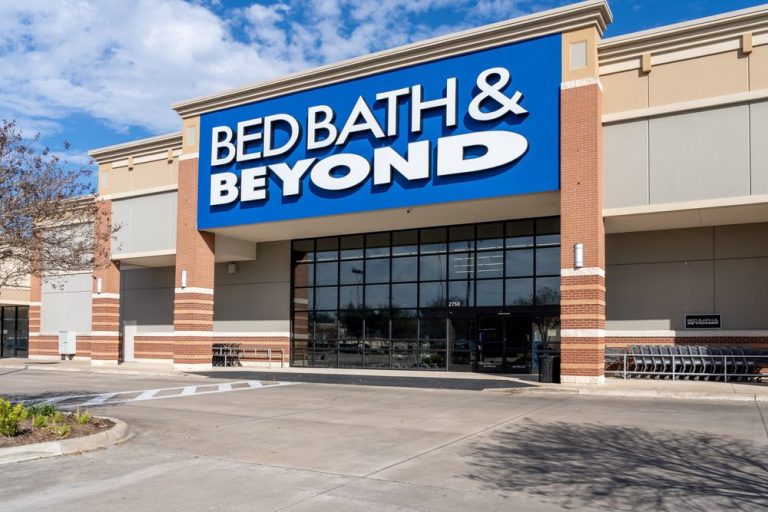Bed Bath & Beyond Faces Potential Bankruptcy Filing

In the face of ongoing challenges, Bed Bath & Beyond said Thursday that it is exploring bankruptcy and other strategic alternatives.
In a report Thursday (Jan. 5) on its third-quarter earnings, the struggling home goods retailer said it is considering several options to save itself, including restructuring and refinancing debt, selling assets, or “obtaining relief under the U.S. Bankruptcy Code.”
“These measures,” the report concluded, “may not be successful.”
The report, released in advance of Bed Bath & Beyond’s quarterly earnings next week, says the company’s net sales fell from $1.8 billion to $1.2 billion year over year. The company’s stock — down 85% in the last year — fell again following the news.
Based on its losses and negative cash flow, as well as its cash and liquidity projections, the retailer has “concluded that there is substantial doubt about the Company’s ability to continue as a going concern.”
Bed Bath & Beyond President and CEO Sue Gove said the announcement underlines the importance of the company’s turnaround plan, which involves building up its digital and omnichannel capabilities and strengthening its financial position.
Gove became CEO last year after the company’s board ousted former chief executive Mark Tritton in the wake of a 27% decline in comparable sales. Sales fell by 26% the next quarter, the company said.
Days after Gove’s appointment, news broke that Bed Bath & Beyond was seeking a buyer for its Buybuy Baby business.
Earlier in 2022, GameStop Chairman Ryan Cohen announced he would sell his 10% stake in Bed Bath & Beyond. He had revealed his stake in BBB in March when he began urging the company to consider selling Buybuy Baby, if not the entire company.
In August, the company announced the turnaround plan, which involved laying off 20% of its staff and shuttering more than 150 stores to improve profitability. It also secured commitments for more than $500 million in new financing.
The plan also included prioritizing national brands — such as Kitchen Aid, UGG and Nespresso — while reducing its private-label “owned brands” by about a third.
“Despite more productive merchandise plans and improved execution, our financial performance was negatively impacted by inventory constraints as we partnered with our suppliers to navigate both micro- and macro-economic challenges,” Gove said Thursday.
For all PYMNTS retail coverage, subscribe to the daily Retail Newsletter.